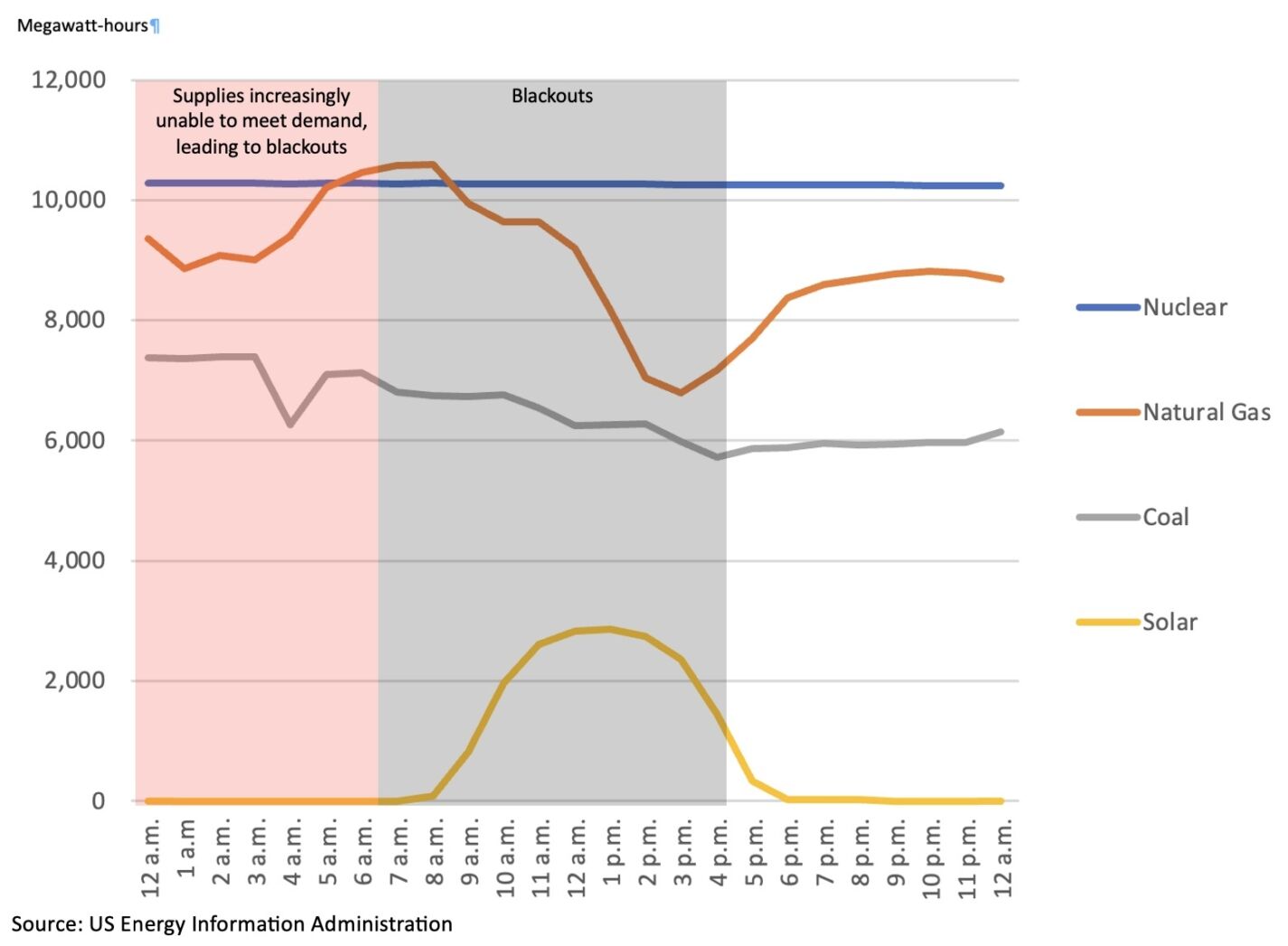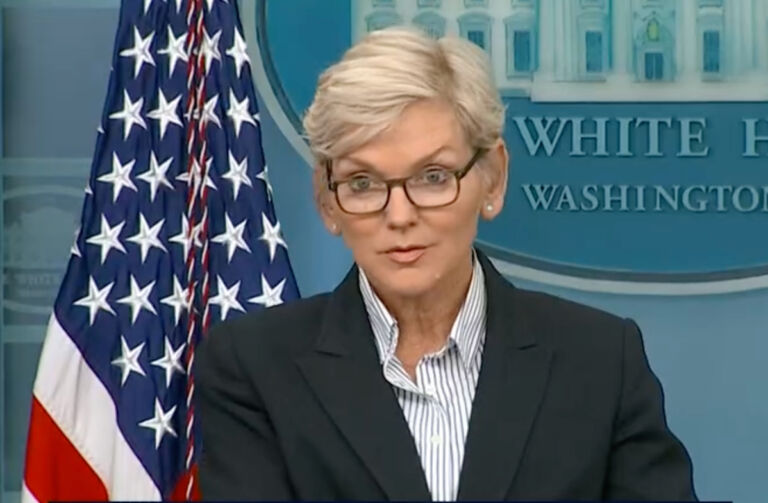Amy O. Cooke, retired Locke CEO, wrote a piece yesterday in Carolina Journal discussing the strange take in response to the Christmas Eve 2022 blackouts offered by Gov. Roy Cooper and his renewable energy cronies and donors. I commend the entire column to you, but I wanted to discuss this bit:
A curious column from Conservatives for Clean Energy (CCE) takes a different approach and parrots Gov. Roy Cooper’s earlier suggestion that increasing the share of intermittent, weather-dependent resources, like wind and solar, would have prevented the blackouts Duke Energy customers experienced in December 2022. Cooper and CCE cite the utility’s testimony before the North Carolina Utilities Commission as proof.
Cooper wrote, “According to Duke Energy, the Christmas Eve power outages resulted from equipment failures at coal and natural gas plants while renewable energy performed as expected.”
CCE said, “We learned that it was cold weather-related failures at its coal and gas plants that were the primary cause of the blackouts.”
Both are an incomplete account of Duke’s testimony, which I encourage everyone to watch. The load shedding was a combination of factors, including a modeling forecast that was lower than the actual demand due to colder than anticipated temperatures, purchased power that failed to materialize, and cold weather protective measures where “in a few cases insulation and heat tracing did not prevent instrumentation from freezing….” The result was a loss of roughly 1300 megawatts during the very early, dark hours of Christmas Eve.
It’s important to note that North Carolina wasn’t alone last year. Utility Dive reports that nine states experienced blackouts due to power demand exceeding supply.
As for solar — yes, Duke said it performed as “expected,” meaning it wasn’t available to meet peak demand because “the peak occurred prior to sunrise.”
Not to put too fine a point on it, but telling people the solution to the blackouts is to flood the grid with loads more intermittent, unreliable solar is bonkers. This proposal from Cooper et al. is very opportunistic but made in seriously bad faith.
The following graph shows the disposition of power generation in the early morning leading up to the blackouts, during the blackouts, and afterward:
Timeline of the Christmas Eve 2022 Blackouts
Hourly electricity generation of Duke Energy Carolinas and Duke Energy Progress, select generation sources

Leading up to the blackouts (shaded light red), you can see that nuclear power was steady throughout, that natural gas ramped up, and that coal fell off. You cannot see the loss of expected additional power supplied by natural gas and coal from the early equipment failures (freezing instrumentation lines from insufficient insulation), nor the loss of expected outside power supplies owing to the need for additional power being spread out across many states.
You also cannot see any production from solar. It was dark, you see.
During the blackouts (shaded gray), you can see that nuclear power was steady throughout, that natural gas fell off and coal declined, as there were some additional equipment issues but also because — as you can see — solar was able to come online and provide assistance. Fortunately that day, North Carolina was sunny. If this were a winter precipitation event, we would have had essentially no solar production at all and much bigger problems.
Afterwards, you can see that nuclear power was steady throughout and that natural gas and coal leveled off. You cannot see any production from solar, because it was dark.
Their solution produced absolutely no power at all for 15 out of the 24 hours in the day — an outcome that was highly normal (i.e., “as expected”).
The governor and his solar cronies are trying to use the blackouts to argue for saddling the grid with even more solar. Natural gas and coal are “unreliable,” they argue based on the instrumentation lines problem curtailing some production — a problem that was highly abnormal.
But their solution produced absolutely no power at all for 15 out of the 24 hours in the day — an outcome that was highly normal. (Unless, again, it were snowing, raining, or overcast, in which case we would have been lucky to have gotten any power out of solar at all.)
They seized on Duke explaining that solar performed “as expected,” without noting that “as expected” meant no power in the early morning to mid-morning, including peak demand, and no power in the late afternoon and beyond.
Cooper et al.’s proposal would be like replacing your entire laptop with a manual typewriter just because the power cord was frayed or the battery died. More to the point, it would be like choosing a manual typewriter that you can access only a handful of hours on certain days.
It’d be like tossing out your entire grill and cooking your steak on a flat iron just because the propane tank ran out. Or getting rid of your car and opting for taking the bus simply because you had a flat tire. An equipment failure does not mean the entire thing is a failure. It certainly doesn’t necessitate panicking into choosing a highly limited replacement.
Looking back at the graph, one can’t help but wonder: if the governor and his clean energy cronies and donors truly want to ensure greater, more reliable electricity provision from a clean energy source, why not actively seek more nuclear power?
Alternatively, if the governor et al. truly want not to ensure greater, more reliable electricity provision, would they propose anything other than what they are?
For more discussion on the reliability and costs of North Carolina’s different electricity generating sources, see the following:


